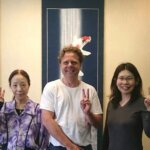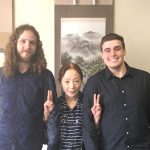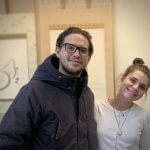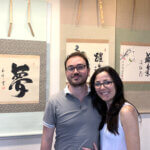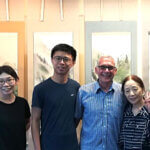American Lady Residing in Japan and Being After a Kakejiku Gift Walked in!!

We have a gallery on the first floor where kakejikus are on sale.
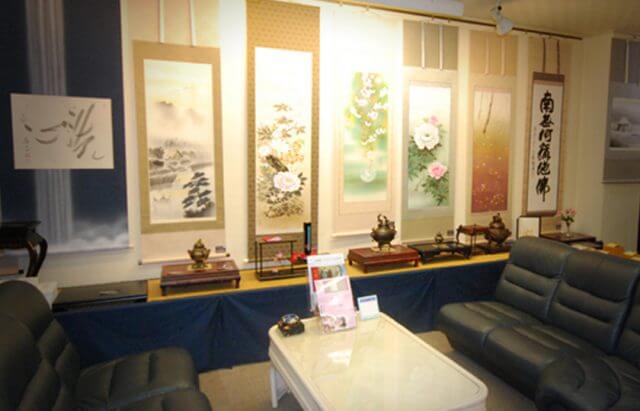
ART NOMURA | Interior
A great number of foreign customers have visited our store for purchasing them, not to speak of Japanese customers.
- The U.S.
- Canada
- France
- The U.K.
- Italy
- Australia
The number of inbound tourists has been on a sharp decline under the pandemic; nevertheless, an occasional walk-in or appointment of resident foreign national customers is always much appreciated.
This episode is about one of those resident foreigners, Lauralee-san, the American lady who visited us.
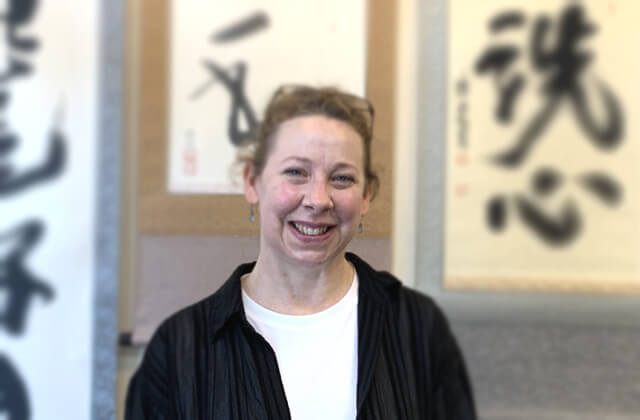
She mentioned that kakejiku sprang to mind when she was thinking of a gift with Japanese taste for a fellow Director on a board who is leaving Japan.
The mother of her calligraphy teacher who has had a kakejiku mounted by us recollected our work and then kindly recommended us to her.
We feel grateful that a satisfied customer brings in a new customer with their recommendation. – By the way, the calligraphy teacher and her mother are Japanese.
Following her request, an art piece with a Japanese ambience, we showed her these of sakura, landscape painting in Sumi ink, and calligraphy.
She herself admired the sakura one. Even so she selected the calligraphy one ”洗心“ the piece with a robust impression since the receiver is a man.

“洗心“ Senshin, which is Zen language alluding to ‘ the importance of purifying the tainted mind and remaining in the state to attain enlightenment’, therefore, we hope this kakejiku gives the owner peace of mind each time he looks at the kakejiku.
The customer Lauralee-san who has been living in Japan for over decades told us that she had studied art back in her country. However, in Japan the unexpectedly huge language barrier has holden her back from involving with art.
She is still learning calligraphy and comes to visit a store like ours where kakejikus are available to deepen her understanding of Japanese art, where possible and little by little and that is really pleasing to know for us also as Japanese.
We emailed her the biography of the calligrapher who drew the calligraphic piece “洗心“ in English a few days after she purchased the piece and then received a thank you letter from the very much pleased customer.
Thank you so much for the artist card and extra attention to this purchase!
I have shared the information and other advice you shared, like don’t roll up the scroll on a rainy day and the special sachet for keeping bugs away.
He really appreciated such a fine piece of artwork. He said he will hang it in his house. So thank you to show so many choices to choose the right one.
I appreciate your effort and enjoyed meeting you and your husband and mother in law. I look forward to visiting you again, and will recommend others to visit you too.
Sincerely, Lauralee
We felt privileged to know that the friend of hers is also very contented with the kakejiku.
Our work enriches connections with people all over the globe through kakejiku and that has been making us appreciative and endeavor towards our work.
Please don’t hesitate to contact us if you have any inquiries about kakejiku.

